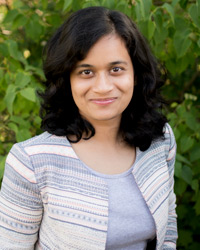Prize-winning research will develop the energy markets of the future

Maximising social welfare and further integrating renewable energy sources into the energy system. This is the potential of two capacity calculation methods primarily focusing on facilitating the cross-border integration of electricity trading.
The research aims to create an open-source agent-based model to simulate and study market actors’ daily behaviour and interaction in the continuous cross-border electricity market.
The changing energy landscape
Two capacity calculation methods, namely flow-based and available transfer capacity, are used in the model. The model serves as a tool for policy-makers, regulators, and economists to improve the intraday market design and solve crucial policy design issues.
The research has been recognised by the European Energy Exchange Group, a major industrial organisation in Europe. This shows that the work is instrumental in studying the changing energy landscape.

The researcher Priyanka Shinde, who recently completed her doctoral degree at the Division of Electric Power and Energy Systems, is behind the awarded model.
“I am happy for the acknowledgement that our research work has the potential to answer the impending energy market questions”, Priyanka Shinde says.
“There is a strong need to join forces and develop a holistic approach to combating climate change. Therefore, working on developing energy markets for different parts of the world will be essential”.
Energy markets from the production and consumption side
Each specific energy market has its unique characteristics due to the region-specific features of, for example, production, consumption, and grid characteristics. The open-source models will offer more transparency and can be tailored according to the specific requirements of a given region.
It will also be essential to develop and present generalised frameworks that can assist different market participants in making optimal market decisions that benefit not only them but society in general. The actions taken by the key actors in the market, both in the short- and long-run, will influence the energy landscape. At the same time, opportunities will need to be created to remove market entry barriers for more minor actors, both from the production and consumption side.
Reaching the decarbonisation goals
Proposing energy market designs to facilitate coordination between various resources will become more important than ever before. The challenges we can solve now will determine future challenges.
“I am optimistic about reaching the decarbonisation goals. Thereby, in the future, there will be changes in both the supply and demand side of the energy sources and the role each actor would play in the market. Newer actors, for example, energy storage, would also emerge”, says Shinde.
“I am honoured, grateful and happy to be recognised with the “European Energy Exchange Excellence Award” for my research work during my PhD journey. Honestly, when I was working on the subject, it was not something I thought about, but the idea was to do my best, to push the boundaries and contribute to the energy transition”, she concludes.
